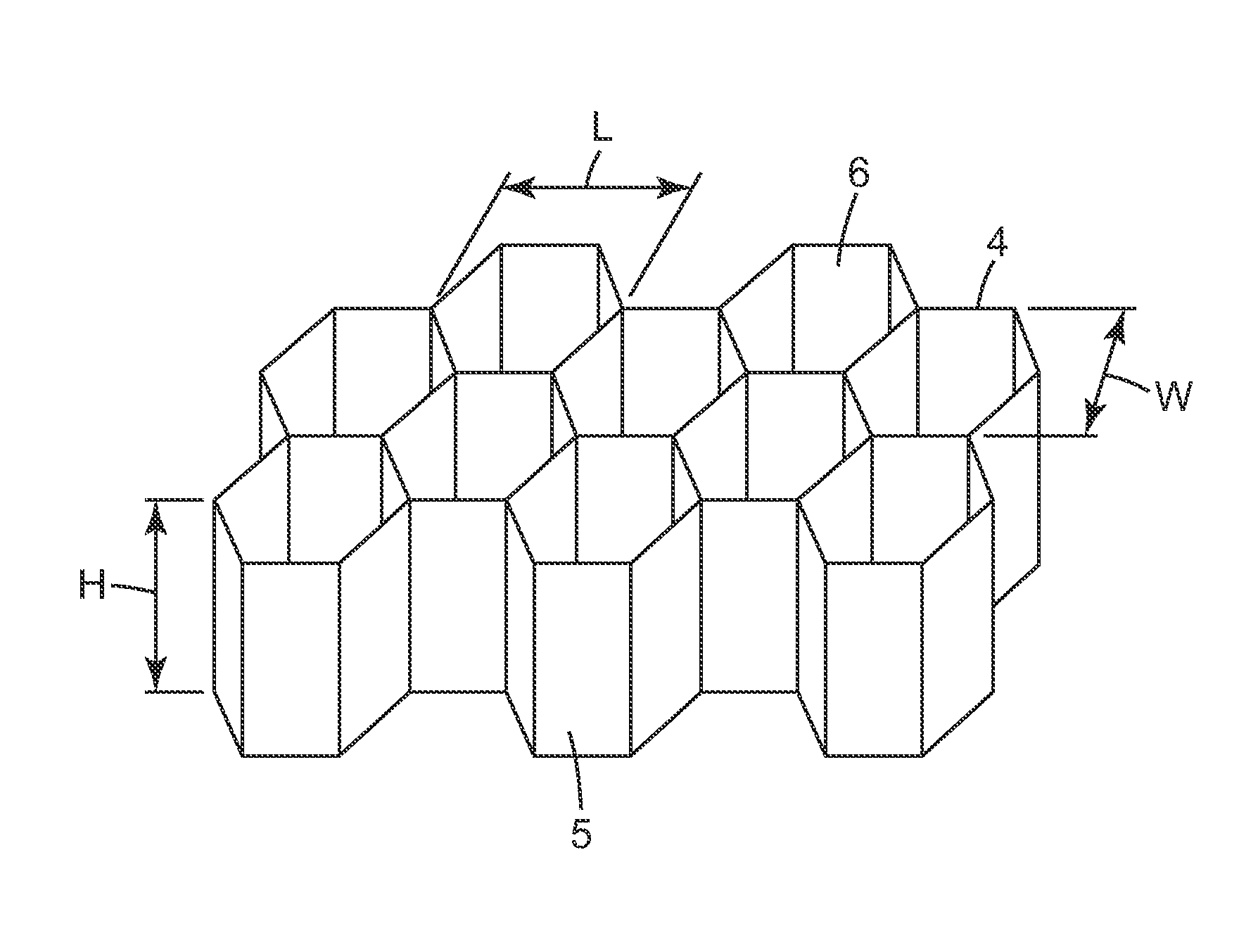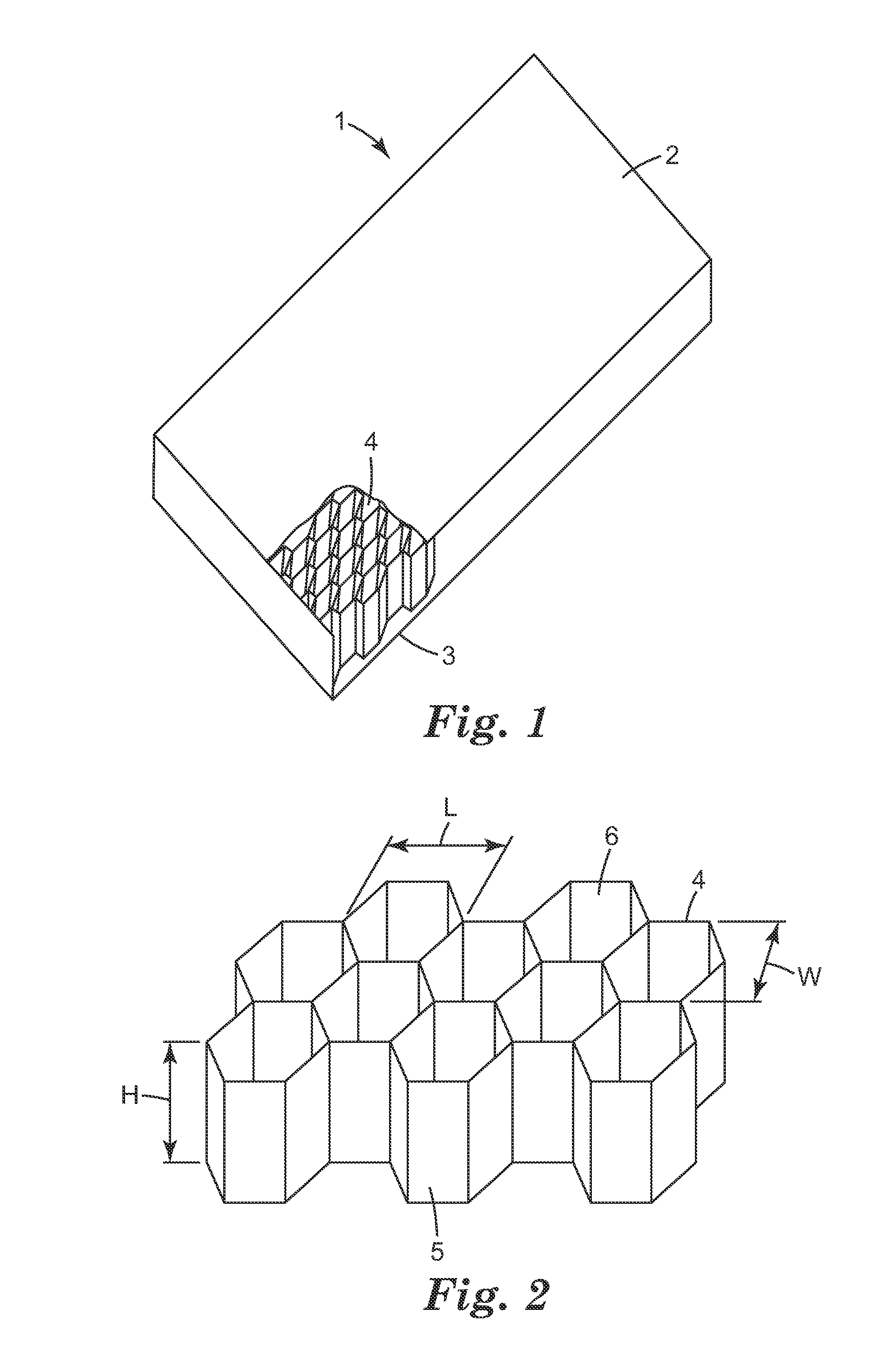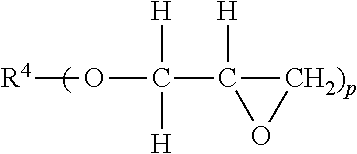Epoxy resin-based composition as a filler honeycomb cells
- Summary
- Abstract
- Description
- Claims
- Application Information
AI Technical Summary
Benefits of technology
Problems solved by technology
Method used
Image
Examples
Example
Examples 1 and 2 and Comparative Example C1-C3
[0137]Epoxy-based curable compositions were prepared by combining in each case the compounds listed below in Table 1 in a 2.0 litre mechanical mogul type mixer commercially available by Linden GmbH, Germany. In Table 1, all concentrations are given as weight percent.
[0138]A temperature of less than 35° C. was maintained during the mixing process, using water-cooling. The epoxy resin was added first and mixed at 20 to 40 rpm with the other ingredients wherein the ingredients are added one after each other and are mixed for about 20 minutes until a homogeneous blend was achieved before the next ingredient was added. In a final step the homogeneous blend was degassed by applying a 100 mbar vacuum for 5 minutes. The precursor formulations were stored −18° C.
[0139]All precursor formulations were pastes having a smooth and uniform consistence.
TABLE 1ingredients of precursor compositionsComponent (wt %)Ex 1C 1Ex 2C 2C 3EPIKOTE 2322526.5252525ep...
Example
[0146]2. The Use of Embodiment 1 Wherein the Epoxy Hardener System of the Curable Composition Comprises a Carboxylic Acid Anhydride Curing Agent.
[0147]3. The use of anyone of the preceding embodiments wherein the epoxy hardener system of the curable composition comprises a carboxylic acid anhydride curing agent and at least one amine curing agent.
[0148]4. The use of anyone of the preceding embodiments wherein the epoxy hardener system of the curable composition comprises a carboxylic acid anhydride as a major component and an amine as a minor component.
[0149]5. The use of anyone of the preceding embodiments wherein the curable composition has an initial extrusion rate of from about 50 g / min to about 300 g / min when being extruded at a temperature of 25° C. and a pressure of 5 bar for 60 seconds through a circular aperture having a diameter of 6.35 mm.
[0150]6. The use of anyone of the preceding embodiments wherein the curable composition has an initial extrusion rate of from about 50 ...
PUM
| Property | Measurement | Unit |
|---|---|---|
| Temperature | aaaaa | aaaaa |
| Temperature | aaaaa | aaaaa |
| Length | aaaaa | aaaaa |
Abstract
Description
Claims
Application Information
 Login to View More
Login to View More - R&D
- Intellectual Property
- Life Sciences
- Materials
- Tech Scout
- Unparalleled Data Quality
- Higher Quality Content
- 60% Fewer Hallucinations
Browse by: Latest US Patents, China's latest patents, Technical Efficacy Thesaurus, Application Domain, Technology Topic, Popular Technical Reports.
© 2025 PatSnap. All rights reserved.Legal|Privacy policy|Modern Slavery Act Transparency Statement|Sitemap|About US| Contact US: help@patsnap.com



